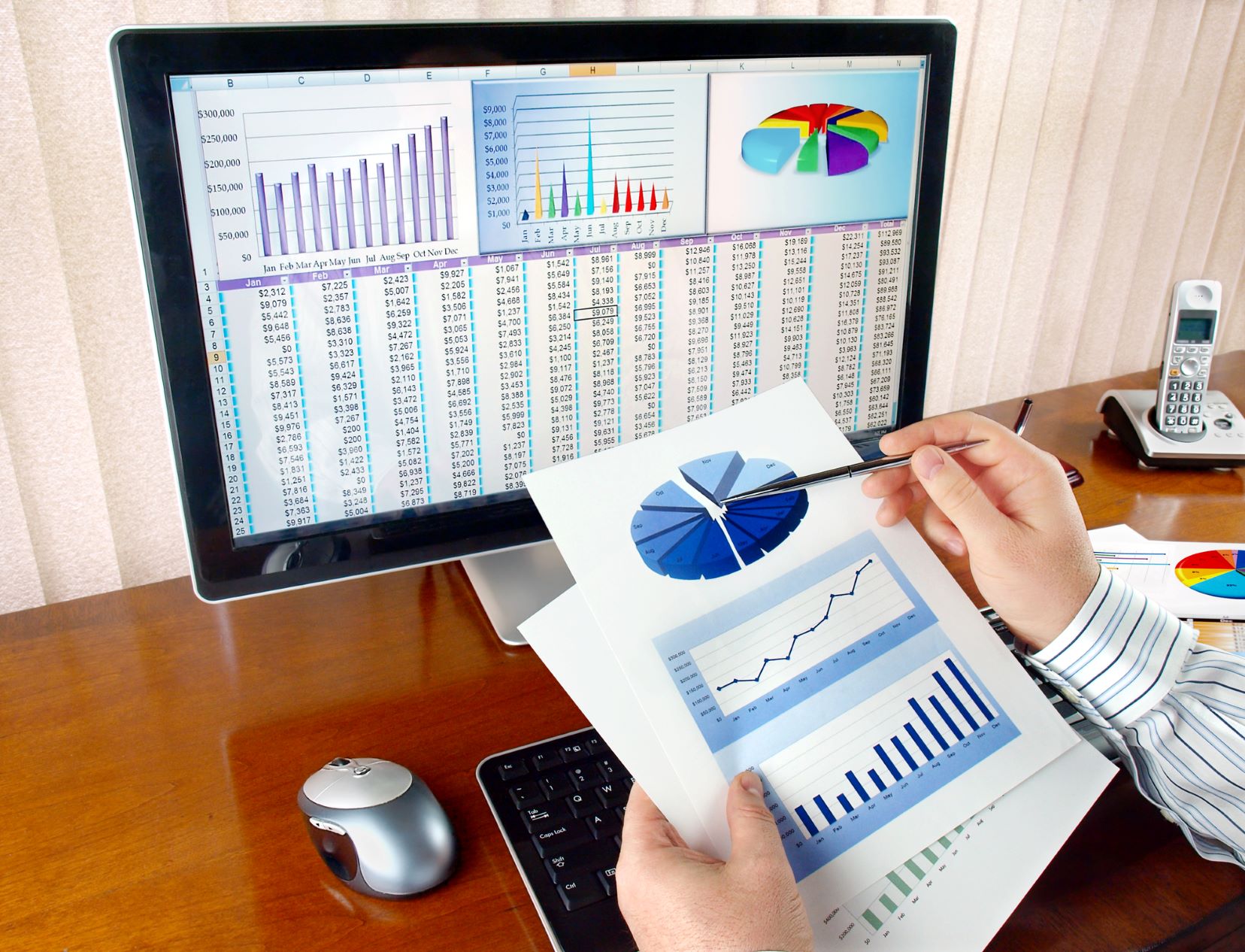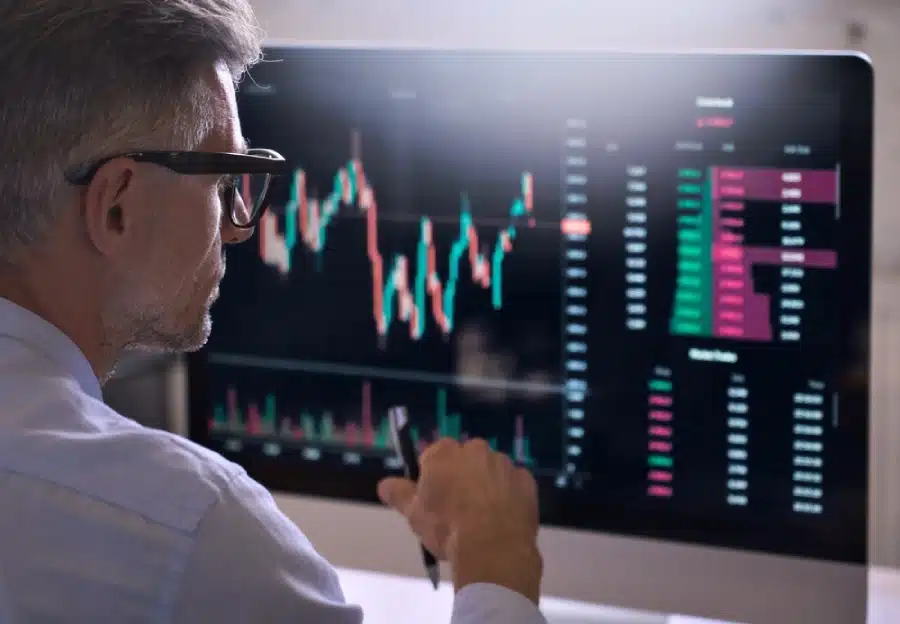Risk is a part of every foray into financial markets — there’s no getting around that. However, successful investors can manage risk and take steps, such as diversifying their portfolios and creating a sustainable budget, so that they can make steady overall gains even if some assets don’t deliver profits.
This is especially important for investors on a budget. A few early losses can knock you out of the game before you even have a chance to get started. Here is a closer look at risks that affect both experts and novice investors and a look at the steps you need to take to mitigate them.

Investment Risk Factors
Investing always has an element of luck. That being said, if you can understand the factors that affect financial markets and how fear and greed lead investors to make decisions about assets and trades, you can make clear-headed decisions about risk management.
Business Risk
Business risk is the uncertainty related to the future of a company. Investors can’t certifiably predict if a company they own shares in will succeed in the future — there are too many external factors that can affect the success of a company. Changes in their industry, new consumer trends or technologies, poor management, regulatory changes, policy shifts, and other factors can all affect a corporation’s performance.
Since business risk is one of the most well-known types of risk, investors follow industry and economic news closely to spot potential business risks before they begin to affect share prices.
Allocation Risk
Allocation risk is the uncertainty that comes from choosing where to put your capital. The decision of whether to put your money in bonds, equities, savings accounts, or cryptocurrency, is only half of the allocation risk. When you allocate your financial resources, you also need to decide what proportion of your money you should put in each asset.
Asset allocation choices are risky in today’s investing world because there are so many options for investing. For example, new investors need to weigh the risks of investing in cryptocurrency versus the stock market and decide how much of their budget to allocate for each type of investment.
Call Risk
Call risk is a less understood investment danger. Companies can sell both callable and non-callable bonds to investors. Callable bonds have a provision that allows a company to compensate a bondholder early.
Companies can use these bonds to make a strategic decision to pay off their debts early. Though callable bonds have a higher annual rate of return, if the company buys them back early, the investor does not get the full interest portion of the bond. While you get the face value of the bond, you lose the expected return on their investment. In other words, you have tied up your money in the bond with little or nothing to show for it.
Political Risk
Political risk involves the potential changes in the country’s political structure. If you own investments in a country, these assets are subject to this type of risk. Dramatic government changes, instability, and conflicts are political risks, but most often, investments are affected by subtler changes, such as new regulations, laws, or tax rules.
Political risks can affect all types of investments, but long-term investments are the most affected by these issues.
Dividend Risk
A dividend is a payment a company gives to its investors to reward them for owning shares. In other terms, it is a way of sharing the company’s profits. Dividend risk is the chance that the company reduces or cuts its dividend payments.
If you own shares, you will see reduced or completely canceled dividend payments. If you are a beginning investor and only own a few shares, dividend earning will be quite modest.
However, share prices typically fall when a company cuts dividend payments. If major investors sell their shares, the value could drop significantly, and you could lose a significant portion of your investment. This is the essence of counterparty risk — the chance you take when one party in a transaction will default and your investment takes a hit.
How To Determine Your Investment Risk Tolerance
Risk tolerance is the level of risk that an investor is willing to accept. Several different factors play a role in this calculation. Your age, goals, and temperament can affect your appetite for risk. It is also essential to decide how much outside factors, like inflation and volatility, could affect your finances.
Your Disposable Capital
Your disposable capital is the amount of money you have to risk on investments. It factors in your total income and savings after paying for necessities like housing, food, healthcare, education, etc. If you lose this money in a poor investment, it will not have a lasting impact on your lifestyle.
Individuals with a higher net worth will often have a high amount of risk capital. They can afford to make riskier bets in the markets. Those with limited disposable capital cannot afford to be as aggressive.
Your Age
Your age is also a factor in how much risk you can take when investing. Younger people can take on more risks because they have more time to earn back losses.
Older individuals have a shorter period to invest before they get to retirement, so it is harder for them to recover from losses in the markets. Other factors, such as the amount of disposable capital can change this factor.
Your Temperament
An individual’s personality and temperament can also play a significant part in calculating risk tolerance. Some methodical investors have the knowledge, discipline, and emotional control to make decisions based on financial data and stick to their strategies religiously. Because they can make informed decisions in the heat of the moment, these people can take on more risks.
Most other investors are better off with more cautious strategies. Some of these market players are prone to letting emotions take over and make spontaneous decisions based on feelings and wishes rather than cold facts. Others are chronic worriers who feel stress with every market fluctuation (even though such movements happen every day).
Inflation and Market Volatility
Inflation is an issue that affects long-term investments because it can cancel out the value of any capital gains. This isn’t an isolated worry either. A recent survey found that 81 percent of Americans are worried about inflation and 64 percent fear market volatility. Volatility can harm shorter-term investments because it can cause substantial losses quickly and the market could take a long time to correct.
Investors may wish to choose investments that aren’t harmed by inflation. These assets could include gold and other precious metals, real estate and real estate investment trusts (REITs), index funds, and treasury inflation-protected securities (TIPS).
Reducing Investment Risks
Risk management is one of the most important factors for successful investing. The most obvious way to manage risk is to opt for safe investments. These stocks, bonds, or savings accounts will not bring significant returns, but the chance of losing your initial investment is low.
Fortunately, there are other steps you can take to mitigate risk so that you can enjoy sustained profitability. Here are some things you can do outside of investing in low-risk assets.
Diversify
Diversification reduces risk by spreading your capital across different types of investments and economic sectors. For example, gold responds positively to inflation, while certain growth stocks decrease in value during the same period. In a well-balanced portfolio, gains in one area during a specific occurrence, such as a time of high inflation, can offset losses in other areas.
The key is to adjust the size of your positions so that you can maximize profits and limit losses and enjoy overall profitability.
You can also diversify by balancing stocks and bonds that offer consistent, modest profits and more risky assets, like start-up stocks or cryptocurrency. If your portfolio is properly proportioned, you can earn low-risk profits and still be able to take chances on riskier investments.
Monitor Investments
The risk of various investments varies based on the timeframe, political changes, and economic events. Financial data is widely available, so you can track all the factors that could affect your current investment positions.
If you monitor these economic aspects, you can see warning signs that could tell you that it is time to sell one of your stocks or purchase a different asset type.
Short-term investors can monitor their positions daily or weekly, while long-term investors can assess their portfolios quarterly.
Hire a Trusted Professional
A diversified long-term investment portfolio is essential for risk management. As an individual investor, you may find it challenging to build and monitor a properly balanced collection of assets.
An investment advisor can help you with each step in the process, from defining your goals and risk tolerance to selecting accounts and assets. This financial professional can also aid you in monitoring all the factors that can change your risk management equations.
Instead of a dedicated professional, you can opt for a self-directed investing account or an investing platform that gives you all the tools, information, tips, and training necessary to successfully manage your assets.




